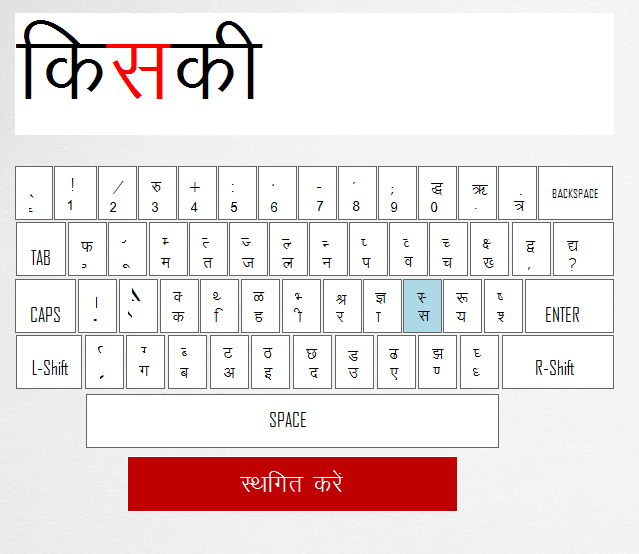Hindi Typing Tutor Pdf

• • • Devanagari (; देवनागरी,: Devanāgarī, a compound of ' देव and ' नागरी; Hindi pronunciation: ), also called Nagari ( Nāgarī, नागरी), is an (alphasyllabary) used in and. It is written from left to right, has a strong preference for symmetrical rounded shapes within squared outlines, and is recognisable by a horizontal line that runs along the top of full letters. In a cursory look, the Devanagari script appears different from other such as,, or, but a closer examination reveals they are very similar except for angles and structural emphasis.
The Nagari script has roots in the ancient script family. Some of the earliest epigraphical evidence attesting to the developing Sanskrit Nagari script in ancient India, in a form similar to Devanagari, is from the 1st to 4th century CE inscriptions discovered in. The Nagari script was in regular use by the 7th century CE and it was fully developed by about the end of first millennium. The use of Sanskrit in Nagari script in medieval India is attested by numerous pillar and cave temple inscriptions, including the 11th-century Udayagiri inscriptions in, and an inscribed brick found in, dated to be from 1217 CE, which is now held at the British Museum.
Download Free Software Old 97s Too Far To Care RARE on this page. The script's proto- and related versions have been discovered in ancient relics outside of India, such as in, and; while in East Asia, Siddha Matrika script considered as the closest precursor to Nagari was in use by Buddhists. Nagari has been the of the Indic scripts. It has long been used traditionally by religiously educated people in South Asia to record and transmit information, existing throughout the land in parallel with a wide variety of local scripts (such as,, and ) used for administration, commerce, and other daily uses.
The Devanagari script is used for over 120 languages, making it one of the most used and in the world. Among the languages using it – as either their only script or one of their scripts – are,,,,,,,,,,,,,,,,,,, and. The Devanagari script is closely related to the script commonly found in numerous ancient manuscripts of South India, and it is distantly related to a number of southeast Asian scripts. Devanagari script has forty-seven primary characters, of which fourteen are vowels and thirty-three are consonants. The ancient Nagari script for Sanskrit had two additional consonantal characters. The script has no distinction similar to the capital and small letters of the Latin alphabet.
Generally the orthography of the script reflects the pronunciation of the language. In on -leaf in 609 CE., Japan. The last line is a complete Sanskrit syllabary in Siddhaṃ script Devanagari is part of the of scripts of,,, and South-East Asia.